Pseudomalachite – Mineral Properties, Photos and Occurrence
Pseudomalachite is a common dark green secondary copper mineral, forming nice botryoidal or drusy specimens. Its popular among mineral collectors and usually occurs together with many other copper minerals.
Crystal Structure of Pseudomalachite
Pseudomalachite is a hydrated copper phosphate Cu5(PO4)2(OH)4 which crystallizes in the monoclinic crystal system. Rare crystals reach only few milimeters in size and are usually rough and rounded, with uneven faces. More commonly, pseudomalachite occurs as a compact, reniform or botryoidal. Less commonly, it may be crusty, fibrous or filmy. Twinning is present on {100}.
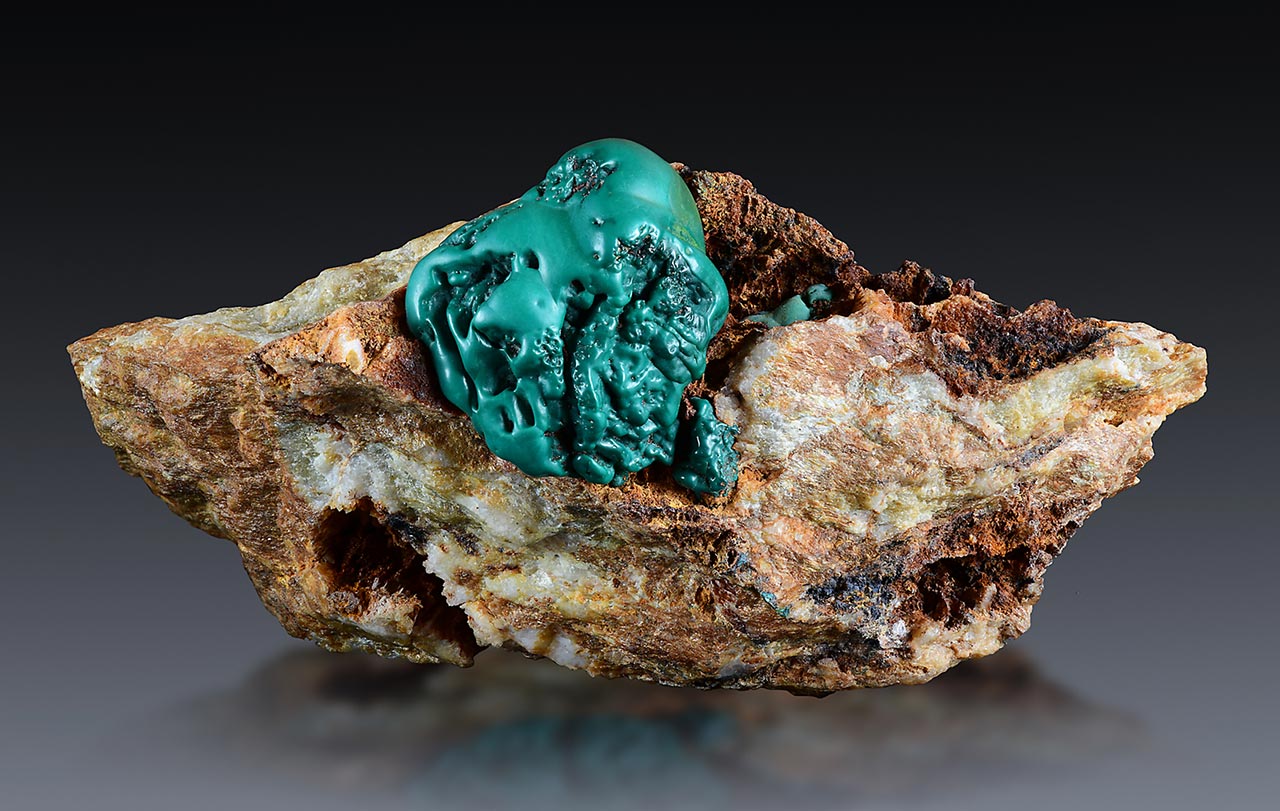
Physical Properties of Pseudomalachite
Pseudomalachite (“false malachite”) was named after its resemblance to the hydrated copper carbonate, malachite. Especially botryoidal aggregates often look exactly the same.
Pseudomalachite is ordinarily dark emerald-green to blackish-green. It is weakly pleochroic in all three optical directions: X = bluish- to pale-green; Y = yellowish-green; Z = deep bluish-green to blue-green.
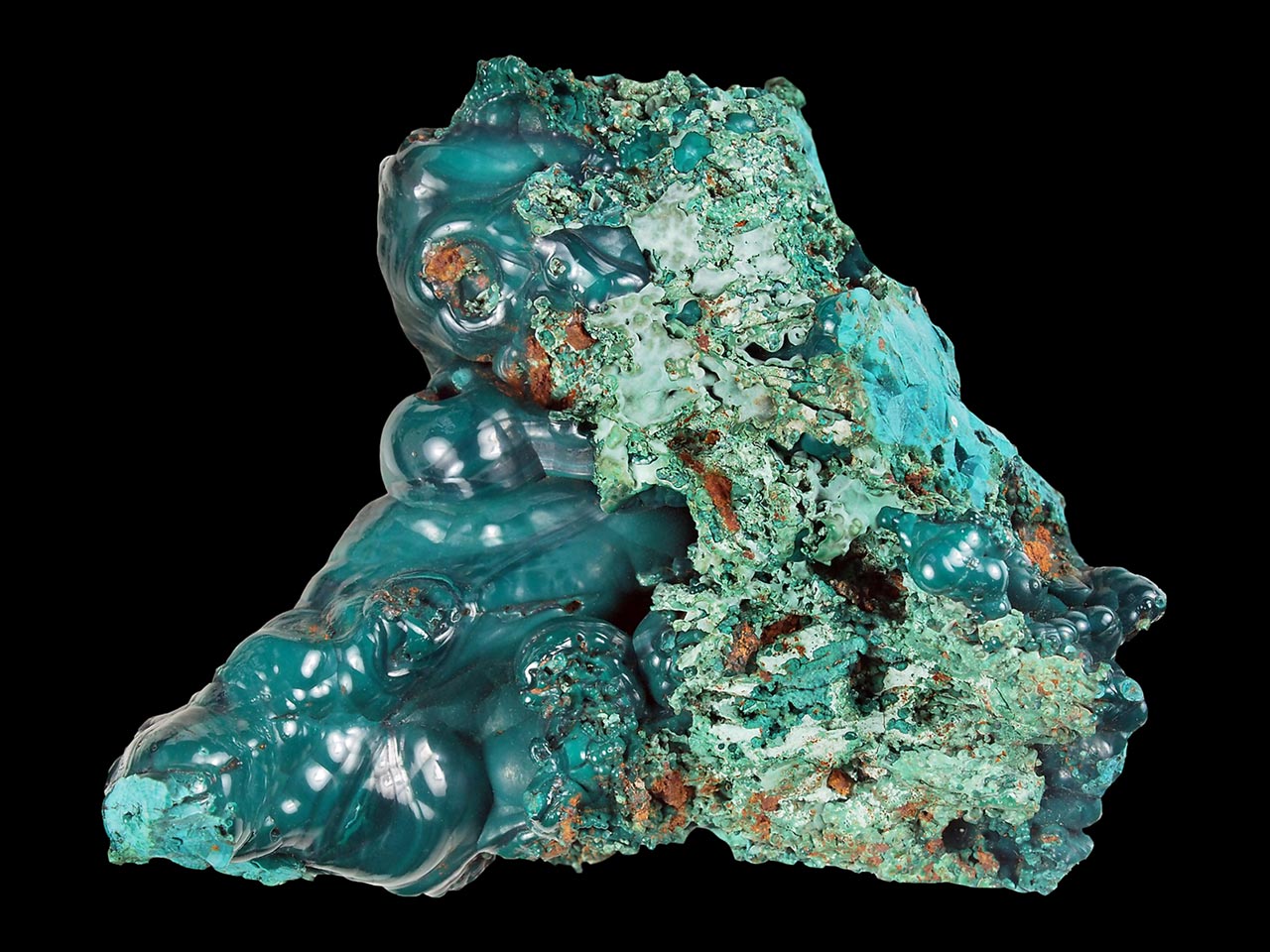
Cleavage is perfect on {100} and distinct on {010}. Luster of pseudomalachite is vitreous and its fracture is splintery or conchoidal. Its hardness is 4.5-5.0; its streak is blue-green, noticeably paler than the parent. Its density is 4.15-4.35.
Pseudomalachite is soluble in warm hydrochloric (muriatic) acid, but without displaying the effervescence typical of malachite.
Similar Minerals
As the name suggests, pseudomalachite is very similar to the malachite Cu2(CO3)(OH)2. And even worse, they are both secondary copper minerals, often present together on the same localities. Crystalline pseudomalachite has obviously different shapes then typical needle shaped crystals of malachite. But botryoidal and crusty aggregates are almost impossible to distinguish from each other.
Many other secondary copper minerals are green and often occur together, having two or three green secondary copper minerals on one specimen is common. Namely tiny drusy or botryoidal ludjibaite and reichenbachite occur often together with pseudomalachite. Distinguishing massive, crusty, drusy or botryoidal specimens is very difficult without advanced analytical methods.
Polymorphs
Pseudomalachite is polymorphous – that means it has the same chemical composition but different structure and physical appearance – with two other copper phosphates: ludjibaite and reichenbachite:
- Ludjibaite (triclinic) was discovered in the Ludjiba Mine, Katanga Province in Zaire.
- Reichenbachite (monoclinic) was discovered in the Reichenbach area, Odenwald, Germany.
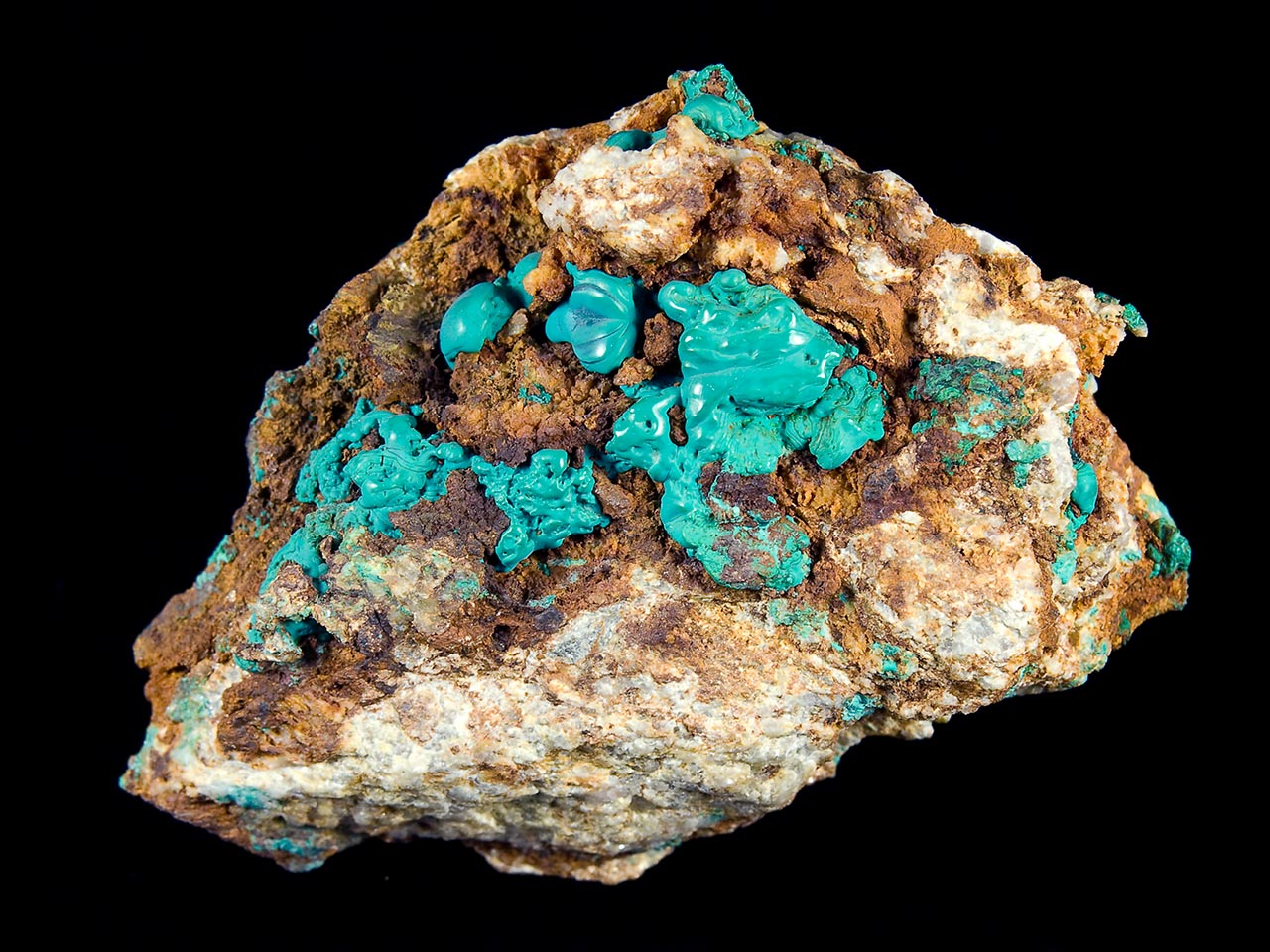
Associated Minerals
As a secondary copper mineral, pseudomalachite is usually associated with copper ores like chalcopyrite, tetrahedrite or bornite and products of their oxidation: azurite, malachite, chrysocolla, cornetite, cuprite, atacamite, libethenite and many others.
Naming and Discovery
Pseudomalachite was first described in 1812 by C. C. Leonhard from Ľubietová, Slovakia as a “Phosphorkupfer” (copper phosphate). Unfortunately, in the same publication another pseudomalachite was described from the Virneberg Mine, Rheinbreitbach, Rhineland-Palatinate, Germany as a “malachite”. Pseudomalachite name was first introduced in 1813 by J. F. L. Hausmann, but many pseudomalachite specimens were later incorrectly identified and published under various names (Phosphorcalcit, Ehlit, Lunnit, Dihydrit). This lasted until 1950 when L. G. Berry analysed many of these specimens and united them under the currently valid name pseudomalachite.
Despite the original error of C. C. Leonhard, the type locality currently is the Virneberg Mine.
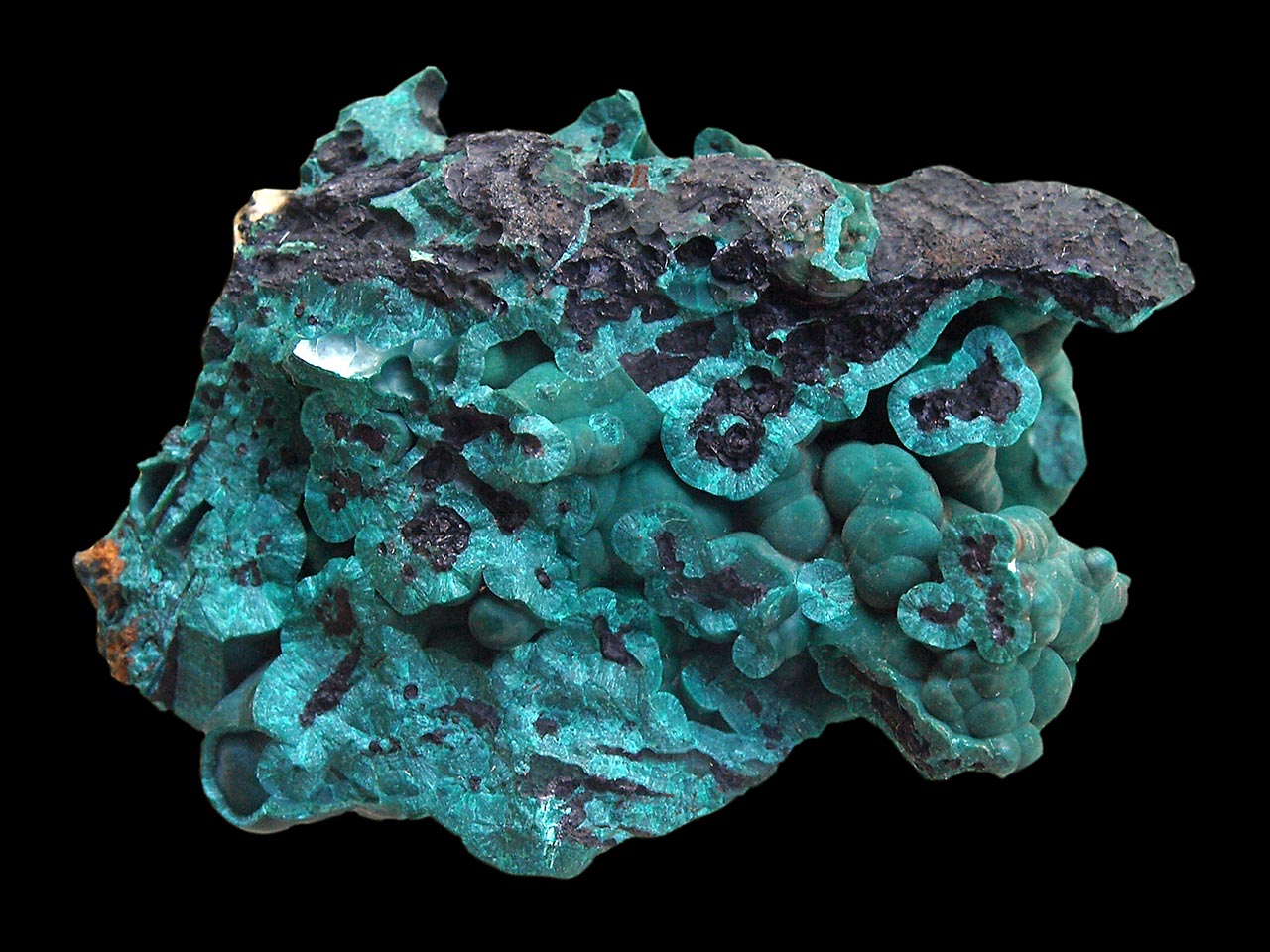
Pseudomalachite Origin
Pseudomalachite is a secondary mineral found in the oxidized zones of copper ore deposits. Its formation requires presence of the copper as well as the phosphorus in the system and is generally much less abundant then its cousin malachite.
Applications
Pseudomalachite is a common secondary mineral in copper deposits, with no dedicated special industrial application. It forms too small and irregular accumulations to be mined as an ore and has no other special features to be used in industry or jewelry. So its use is solely as the mineral specimens for collectors.
Occurrence of Pseudomalachite
Occurrences of pseudomalachite are ubiquitous, occurring in all inhabited continents and many countries.
There are numerous localities in Europe: Nice crystallized specimens originate from type locality Virneberg Mine (St. Josephsberg Mine), Rheinbreitbach, Rhineland-Palatinate, Germany. Excellent specimens of botryoidal pseudomalachite were found in Ľubietová, Slovakia. Very nice crystallized and large botryoidal specimens come from Miguel Vacas Mine, Pardais, Évora District, Portugal.
Other German localities include: Silberbrünnle Mine in Schwarzwald, Baden-Württemberg; Lichtenberg Copper Mines in Franconia, Bavaria; Reichenbach in Odenwald, Hesse; Obererl (formerly Ehl), Linz am Rhein in Rhineland-Palatinate.
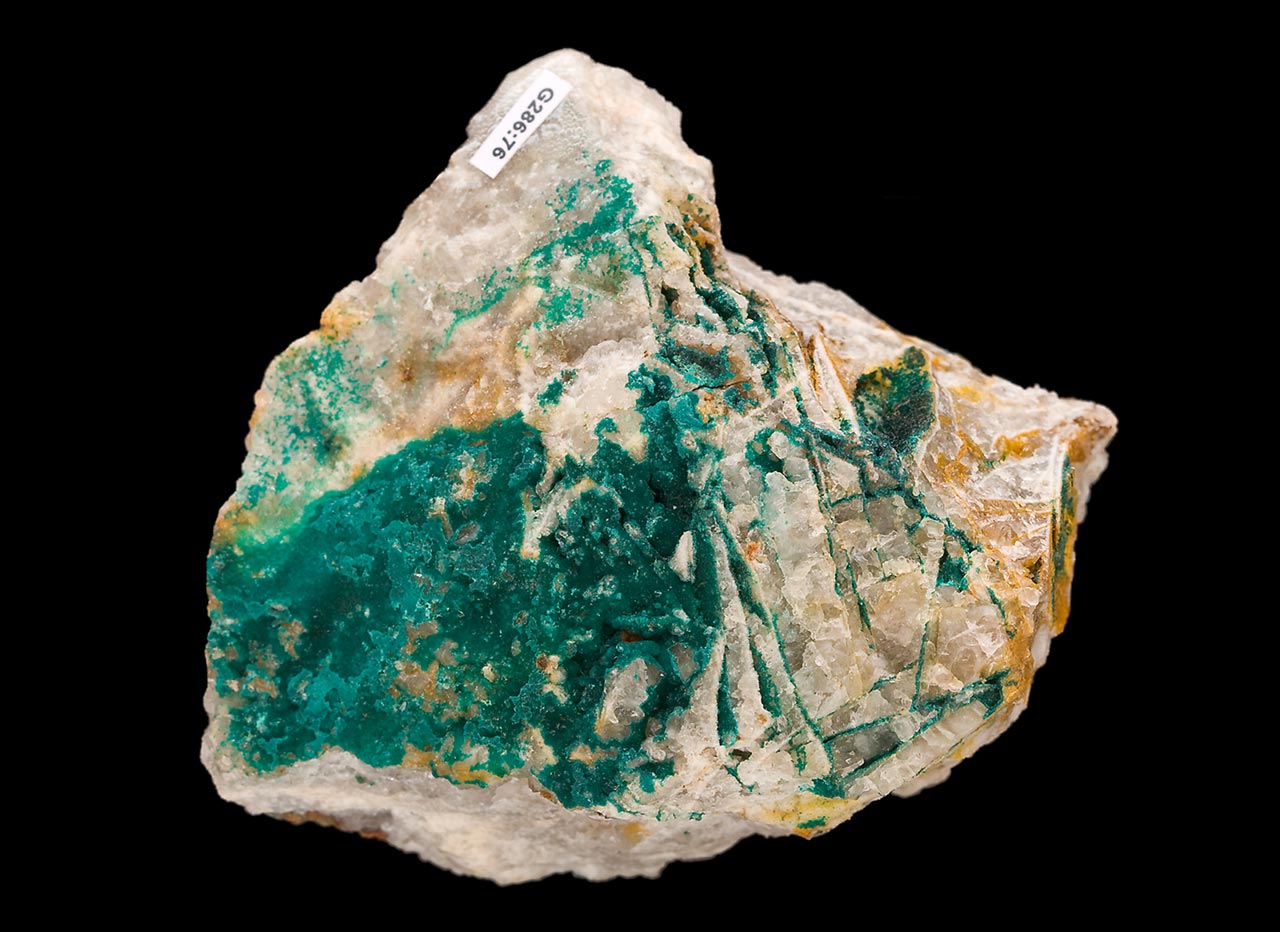
Other European localities are: Kohlberg Mountain in Austria; Funtana Maggiore Prospect, Montresta, Sardinia in Italy; Salm-Château, Vielsalm in Belgium; and numerous places in Cornwall, England.
There are numerous African localities providing very nice specimens: Kakanda and M’sesa, near Kambove, Katanga Province in Congo; Mindouli in Congo Republic; Bwana Mkubwa, Ndola, and Nchangamines, Chingola in Zambia.
US copper mines are particularly rich in specimens: Thornton pit, Gila Co., Lone Starmine, near Safford, Graham Co., Harquehala, La Paz Co. – all in Arizona; Schuyler Copper Mine, North Arlington in New Jersey; Perkiomen and Ecton mines, Montgomery Co. in Pennsylvania; Empire-Nevada mine, Yerington district, Lyon Co. in Nevada.
Other notable localities worldwide include: Manto Cuba Mine and Chiquicamata Mine, Atacama Region in Chile; West Bogan mine in New South Wales and Burra Burra mine, Mt. Lofty Ranges, South Australia in Australia; Nizhny Tagil and Bogoslovks, Ural Mountains in Russia.





Comments